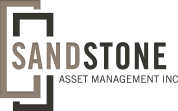Nearly 40 years ago, in 1981, the yield on the 10-year U.S. Treasury bond reached an all-time high just shy of 16 per cent. Fast forward to 2019 where, now, the 10-year U.S. Treasury bond sits at approximately two per cent.
Think about that for a second: what once was yielding so robustly, is now just a fraction of that. Doesn’t exactly get the juices flowing, does it?
Over the past ten years, investments in equities have experienced stellar returns so, naturally, our emotional and behavioural biases would tend to favour equities. With strong historical returns, investors can be guilty of looking in the rearview mirror—extrapolating past performance into the future.
It certainly explains why many people have been so quick to shun fixed income, of late, in favour of higher-risk, higher-return assets. While a yield of approximately two per cent on the 10-year might not seem all that appealing, keep in mind it’s only one fixed-income example.
Despite this less-than-rosy yield depiction, opportunities can be found using strategic variables such as country selection, currency exposure, duration selection, and non-traditional investments. The argument and examples we’re about to present you serve to make the case for fixed income as an asset class worthy of its weight—wherever the market lands.
The FOMO Factor
For hypothetical purposes, let’s look at the performance of a portfolio allocated solely with equities—or ‘all eggs in one basket,’ so to speak. Now, if the stock market rose indefinitely, then the argument for this 100 per cent equity investment could be justified. However, this has never been the case—and never will be.
Further, not even the savviest of investors will ever know with 100 per cent certainty what the markets will do. Yet, people continually forget this fact. They’re easily swayed by headlines, the word on the street, what their friends are doing. They start to suffer from the common human affliction known as the fear of missing out—‘FOMO’—as it’s known in modern parlance. In a nutshell, this is where natural emotional and behavioural biases tend to eclipse logic.
The ‘cautionary’ part comes into play when FOMO follows a market decline. While downturns are a normal part of any business cycle, they also have the potential to cause extensive damage to an unprepared portfolio. Investors all-too-often underestimate the returns that are required to recover losses—and, meanwhile, that figure to breakeven grows exponentially. Minimizing capital losses is critical to portfolio performance. Therefore, our risk-management expertise behooves us to ensure client asset selection be structured dependent on individual risk tolerance.
From ‘all-in’ to down-and-out
Let’s re-visit 2018. Take the fictional scenario where an investor goes full throttle with an all-stock portfolio. Q4 arrives and the stock market has taken a nosedive and incurs a 19.8 per cent decline. Such a stark downturn wreaks havoc on the investor’s portfolio where a subsequent return of 24.7 per cent would be required just for it to return to its breakeven point.
Now, take that same fully exposed equities investor and place him or her right amid the global financial crisis of 2007-08. The far more drastic decline of 56.8 per cent would require the market to incur a whopping 131.5 per cent return in order to recoup his or her losses.
See what we’re getting at?
The beauty of balance

Grim examples aside, fact is, when equity markets are navigated with care and caution, bouts of market volatility can be effectively managed. Fixed income isn’t meant to be a ‘sexy’ investment. “Think of it as a ‘sea anchor,’ serving several vital and strategic roles within a client’s portfolio,” says Sharon Watkins, CEO and chief investment strategist, Sandstone Asset Management Inc.
“The percentage allocated to fixed income should depend on an investor’s ability to bear risk, his or her tolerance for volatility, and their typical behaviour during market fluctuations.”
“Think of fixed income as a ‘sea anchor,’ serving several vital and strategic roles within a client’s portfolio.”
Sharon Watkins, CEO and Chief Investment Strategist, Sandstone Asset Management Inc.
Diversification
Due to a low correlation between bonds and equities, fixed income provides protection when equity markets experience a downturn. When the equity portion of the portfolio struggles, bonds can serve as a shock absorber to help lessen portfolio volatility.
Capital Preservation
In a market decline, being heavily concentrated in riskier assets (equities) can create a significant loss of capital. With high-grade, fixed-income instruments, the principal value of the bond is repaid to the investor at maturity, thereby, preserving and returning capital.
Income Generation
Fixed-income assets can provide consistent and reliable coupon payments—with yields that vary according to time to maturity, credit rating, and geographic location.
Bottom Line: In a world dominated by ‘short-termism,’ the value and purpose of fixed income are often forgotten. Bonds are not exciting by a longshot. They provide the aforementioned behavioural benefits, and play an essential role in one’s portfolio. They are defensive by nature and remain liquid throughout market sell-offs.
Indeed, a fixed-income allocation can help provide portfolio stability and resiliency during heightened market volatility—or worse, an economic downturn. That stability can help prevent investors from acting irrationally while maintaining a focus on long-term investment goals.
We realize the current low-yielding environment has made fixed income less appealing. However, interesting opportunities are available using country selection, currency exposure, maturity selection, and non-traditional investments. In this respect, we continue to see select opportunities in markets with positive real rates.
Now that you know fixed-income’s full picture—and positive potential—ask yourself, how much risk are you willing to take?
